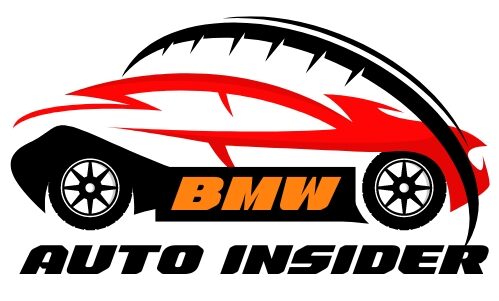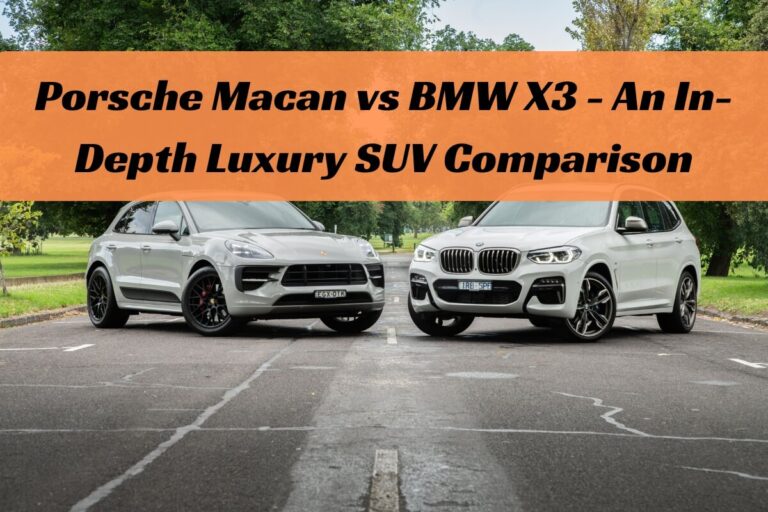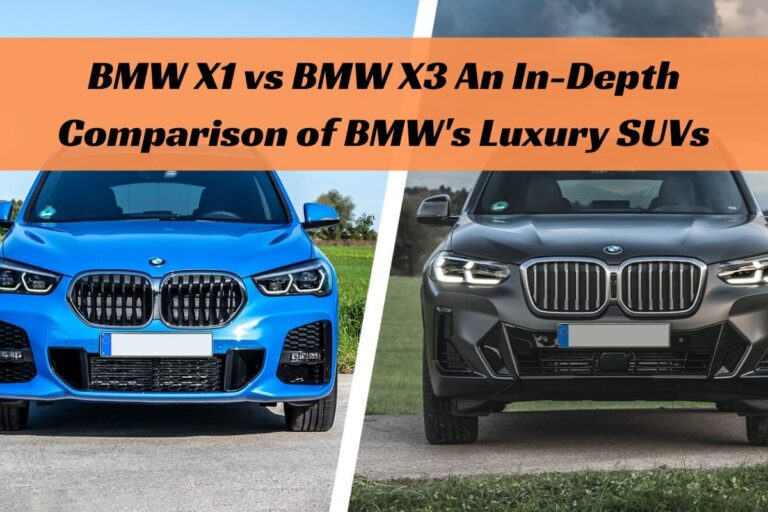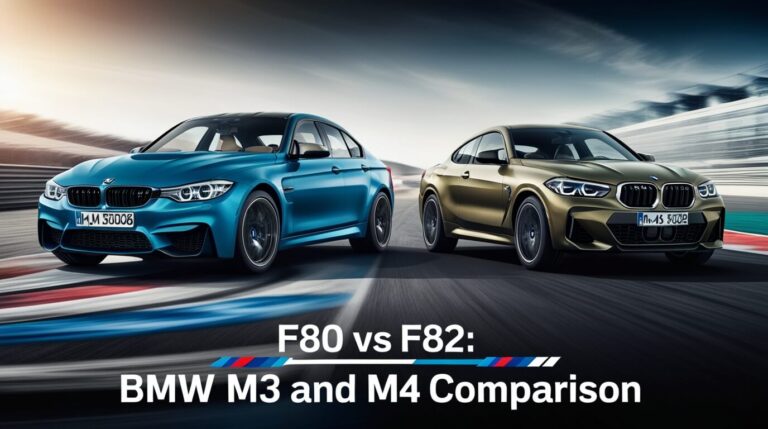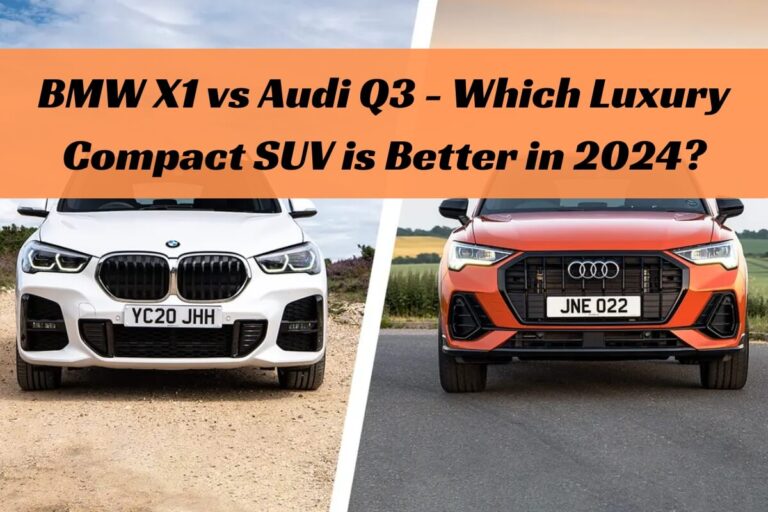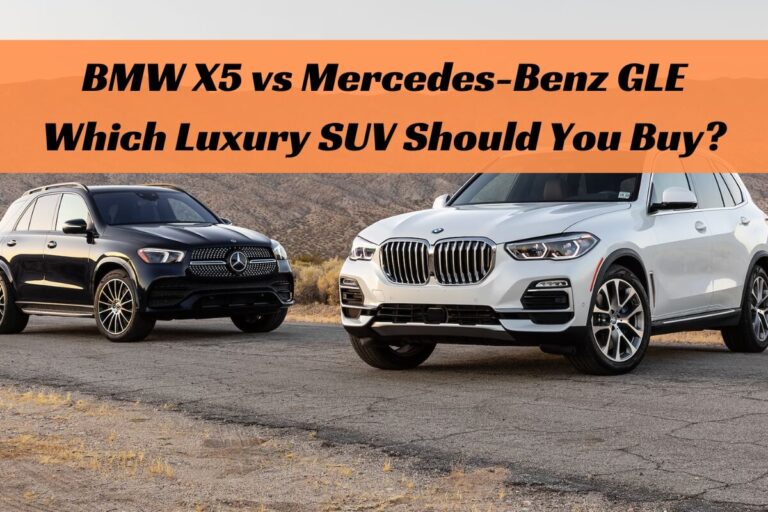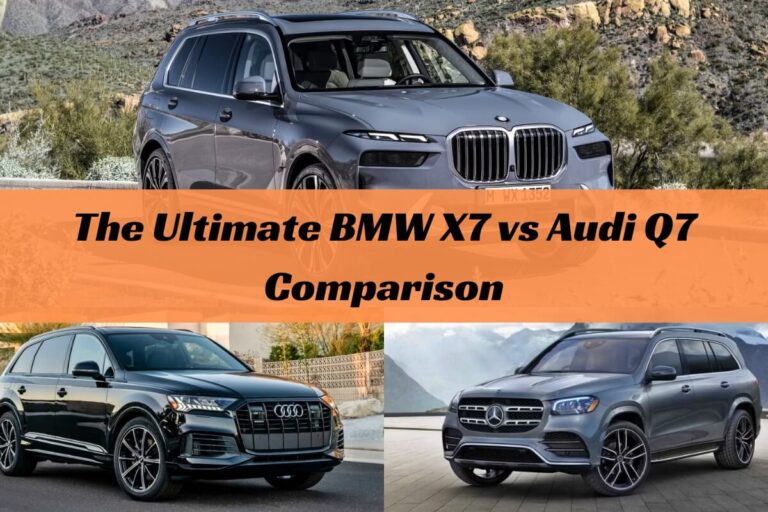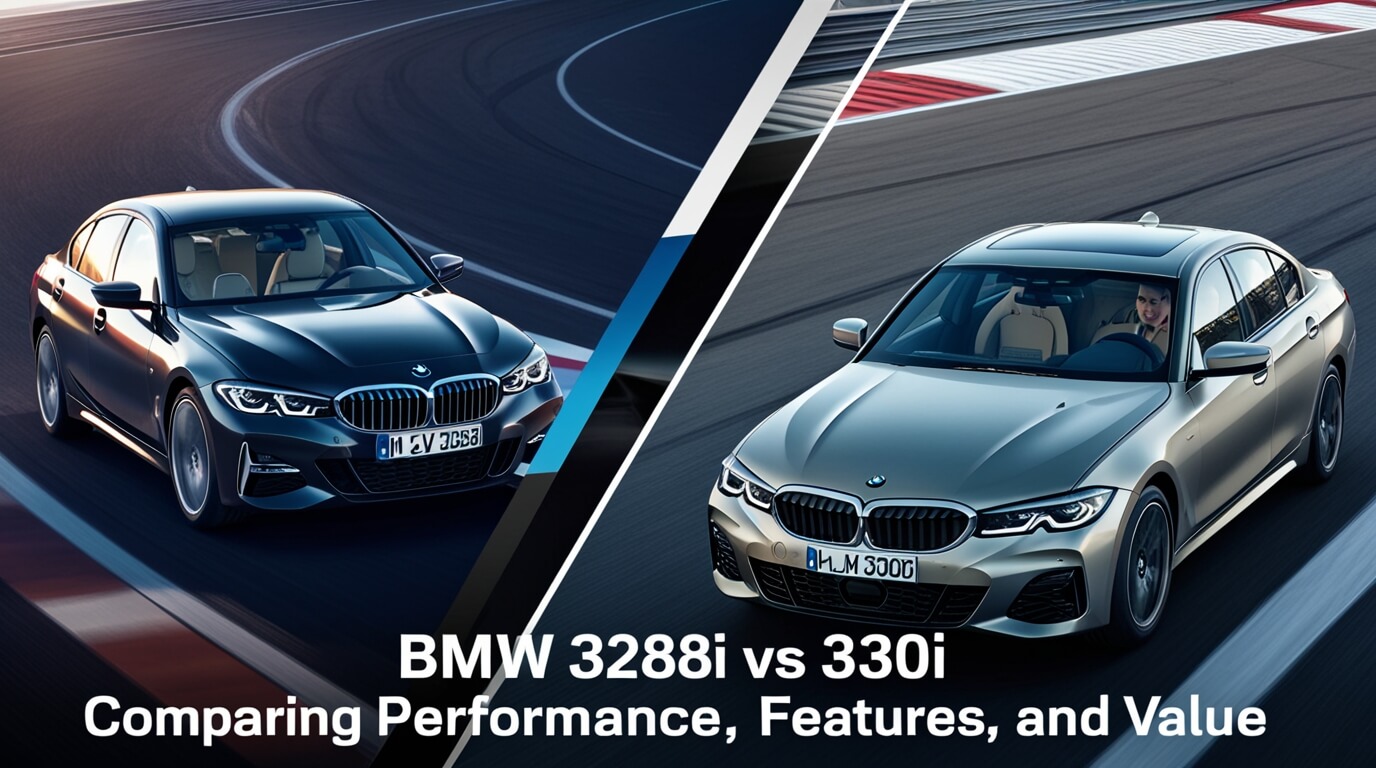
Are you torn between the BMW 328i and 330i? These popular models in BMW’s 3 Series line offer different performance levels, features, and price points. The 330i generally provides more power and updated technology, while the 328i offers a balance of performance and value. This guide will help you understand the key differences between these two BMW siblings, covering everything from engine specs to owner experiences.
Engine Performance and Specifications
The heart of any BMW lies under the hood. Let’s compare the engines of the 328i and 330i to see how they stack up.
BMW 328i Engine Details
The 328i comes equipped with a 2.0-liter turbocharged inline-4 engine. This powerplant delivers:
- 240 horsepower
- 255 lb-ft of torque
- 0-60 mph in about 5.7 seconds
It’s a peppy engine that provides ample power for daily driving and highway merging.
BMW 330i Engine Details
Stepping up to the 330i, you’ll find a more potent version of the 2.0-liter turbo-4:
- 255 horsepower
- 295 lb-ft of torque
- 0-60 mph in roughly 5.4 seconds
The 330i’s extra punch is noticeable, especially when accelerating from a stop or passing on the highway.
Power and Torque Comparison
The 330i clearly has the edge in raw numbers. Its 15 extra horsepower and 40 additional lb-ft of torque translate to quicker acceleration and more responsive driving. However, the 328i is no slouch and many drivers find its power more than adequate for everyday use.
Fuel Efficiency and Economy
Performance is great, but what about fuel costs? Let’s look at how these BMWs sip (or gulp) gas.
328i Fuel Consumption
The 328i boasts respectable fuel economy for a luxury sports sedan:
- City: 23 mpg
- Highway: 35 mpg
- Combined: 27 mpg
These figures make it a solid choice for those balancing performance with fuel costs.
330i Fuel Consumption
Despite its power advantage, the 330i manages similar efficiency:
- City: 24 mpg
- Highway: 34 mpg
- Combined: 27 mpg
The nearly identical fuel economy shows BMW’s commitment to improving performance without sacrificing efficiency.
Real-World Efficiency Experiences
Owners report that real-world fuel economy often varies. Driving style, traffic conditions, and climate all play a role. Some 328i owners claim to achieve better than EPA estimates, while 330i drivers sometimes report slightly lower figures, likely due to the temptation to enjoy the extra power more often.
Driving Dynamics and Handling
BMW prides itself on creating the “Ultimate Driving Machine.” How do these two models deliver on that promise?
328i Driving Characteristics
The 328i offers:
- Responsive steering
- Well-balanced chassis
- Comfortable ride for daily driving
Many owners praise its blend of sportiness and comfort, making it suitable for both spirited weekend drives and mundane commutes.
330i Driving Characteristics
The 330i builds on the 328i’s foundation with:
- Slightly stiffer suspension
- More precise steering feel
- Enhanced stability in corners
These improvements make the 330i feel more planted and confident, especially when pushing the car’s limits.
Steering and Suspension Differences
While both cars use similar suspension setups, the 330i often comes with optional adaptive dampers. This system allows drivers to switch between comfort and sport modes, adjusting the car’s ride and handling characteristics on the fly. The 328i’s fixed suspension, while well-tuned, doesn’t offer this level of customization.
Interior Features and Comfort
A BMW isn’t just about performance – luxury and comfort play huge roles too. Let’s peek inside these 3 Series models.
328i Interior Highlights
The 328i comes well-equipped with:
- Leatherette upholstery (leather optional)
- 8-way power-adjustable front seats
- Dual-zone automatic climate control
- 6.5-inch infotainment display
It’s a comfortable and well-appointed interior, fitting for a luxury brand.
330i Interior Upgrades
The 330i takes things up a notch:
- Standard leather upholstery in most markets
- Memory settings for the driver’s seat
- Larger 8.8-inch infotainment display (in newer models)
- Available ambient lighting package
These upgrades give the 330i a more premium feel, though the differences aren’t night and day.
Seating and Space Comparison
Both the 328i and 330i offer identical interior dimensions:
- Front headroom: 40.3 inches
- Rear legroom: 35.1 inches
- Cargo space: 13 cubic feet
The main differences lie in the quality of materials and available options, rather than space or layout.
Technology and Infotainment
Modern luxury cars are packed with tech. How do these BMWs compare in the digital realm?
328i Tech Features
The 328i includes:
- iDrive infotainment system
- Bluetooth connectivity
- USB port for media playback
- Available navigation system
It’s a solid tech package, though some features might feel dated in older models.
330i Tech Advancements
The 330i, especially in newer iterations, offers:
- Wireless phone charging
- Apple CarPlay (and in some markets, Android Auto)
- Available digital instrument cluster
- Improved voice control system
These upgrades make the 330i feel more modern and connected.
User Interface and Connectivity
Both models use BMW’s iDrive system, but the 330i often has a more recent version. This means smoother operation, better graphics, and more features. The larger screen in the 330i also improves the user experience, making maps and menus easier to read at a glance.
Safety Features and Ratings
Safety is paramount in any vehicle. Let’s examine how these BMWs protect their occupants.
328i Safety Equipment
Standard safety features on the 328i include:
- Antilock brakes
- Stability and traction control
- Front and side airbags
- Emergency braking assist
It’s a comprehensive set of safety equipment that provides peace of mind.
330i Safety Enhancements
The 330i builds on this foundation with:
- Available adaptive cruise control
- Lane departure warning
- Automatic high beams
- More advanced parking sensors
These additional features can make a difference in preventing accidents.
Crash Test Results and Ratings
Both the 328i and 330i perform well in crash tests:
- IIHS Top Safety Pick (when equipped with optional front crash prevention)
- 5-star overall rating from NHTSA
The structural integrity and safety systems are largely identical between the two models, so you can expect similar levels of protection.
Reliability and Maintenance
BMWs have a reputation for being expensive to maintain. How do these models stack up in terms of reliability?
Common Issues in 328i
Some reported problems in the 328i include:
- Oil leaks from the valve cover gasket
- Electric water pump failures
- Issues with the timing chain in early models
Regular maintenance can prevent many of these issues, but they’re worth keeping in mind.
Typical Problems in 330i
The 330i shares many components with the 328i, so it faces similar potential issues:
- Coolant leaks
- Faulty fuel injectors in some cases
- Electrical gremlins in the infotainment system
Again, proper care and timely repairs can mitigate these problems.
Long-Term Ownership Costs
Both models can be expensive to maintain compared to non-luxury brands. However, the 328i might have a slight edge in long-term costs due to its simpler engine and fewer high-tech features that could potentially fail. The difference isn’t huge, but it’s worth considering for budget-conscious buyers.
Resale Value and Depreciation
Luxury cars often depreciate faster than mainstream models. How do the 328i and 330i hold their value?
328i Market Value Retention
The 328i tends to depreciate at a typical rate for luxury sedans:
- Loses about 40% of its value in the first three years
- Can retain around 45-50% of its value after five years
These figures can vary based on condition, mileage, and local market factors.
330i Depreciation Trends
The 330i often fares slightly better:
- Might lose 35-38% of its value in three years
- Can retain 50-55% of its value after five years
The 330i’s higher initial price and more desirable features help it hold value a bit better.
Factors Affecting Resale
Several elements impact resale value for both models:
- Maintenance history
- Optional equipment (especially on the 330i)
- Color and interior choices
- Local demand for luxury vehicles
Keeping detailed service records and choosing popular colors can help maximize resale value.
Price and Value Proposition
The price difference between these models can be significant. Let’s break down the costs.
328i Pricing and Trims
New 328i models (when they were still in production) typically started around:
- Base model: $40,000
- Well-equipped: $45,000-$50,000
Used prices vary widely based on age and condition but offer significant savings over new models.
330i Cost and Options
The 330i commands a premium:
- Base model: $43,000
- Loaded with options: $55,000+
The price gap widens as you add options, which are often more numerous and expensive on the 330i.
Cost-Benefit Analysis
Is the 330i worth the extra cost? It depends on your priorities:
- If you crave the latest tech and maximum performance, the 330i might justify its premium.
- For those seeking a balance of luxury and value, a well-equipped 328i could be the sweet spot.
- Used buyers might find the best value in slightly older 330i models, getting more features for 328i money.
Owner Experiences and Reviews
What do real-world owners say about these cars? Let’s hear from the people who drive them every day.
328i Owner Testimonials
328i owners often praise:
- Smooth power delivery
- Comfortable ride for daily use
- Good balance of performance and efficiency
Criticisms sometimes include:
- Desire for more power in certain situations
- Some find the base sound system lacking
330i Driver Feedback
330i drivers frequently mention:
- Noticeable performance boost over the 328i
- Appreciation for the more advanced tech features
- Satisfaction with the premium feel
Downsides reported include:
- Higher maintenance costs
- Some find the ride too firm with certain suspension setups
Professional Critic Opinions
Automotive journalists tend to favor the 330i for its stronger performance and newer technology. However, many note that the 328i represents an excellent value, especially on the used market. The consensus is that both are strong entries in the compact luxury sedan segment, with the choice coming down to individual priorities and budget.
Conclusion
The BMW 328i and 330i are both excellent cars that uphold BMW’s reputation for performance and luxury. The 328i offers a great balance of power, efficiency, and value, making it an attractive option for many buyers, especially in the used market. The 330i, with its stronger engine and more advanced features, appeals to those seeking a bit more excitement and cutting-edge technology.
Your choice between the two will depend on your specific needs:
- If you prioritize value and don’t mind slightly less power, the 328i is a solid choice.
- For those who want the latest features and are willing to pay a premium for extra performance, the 330i is the way to go.
Whichever you choose, you’ll be getting a car that delivers the engaging driving experience BMW is known for. Test drive both if you can – the seat-of-the-pants feel might be the deciding factor in your BMW 328i vs 330i decision.
